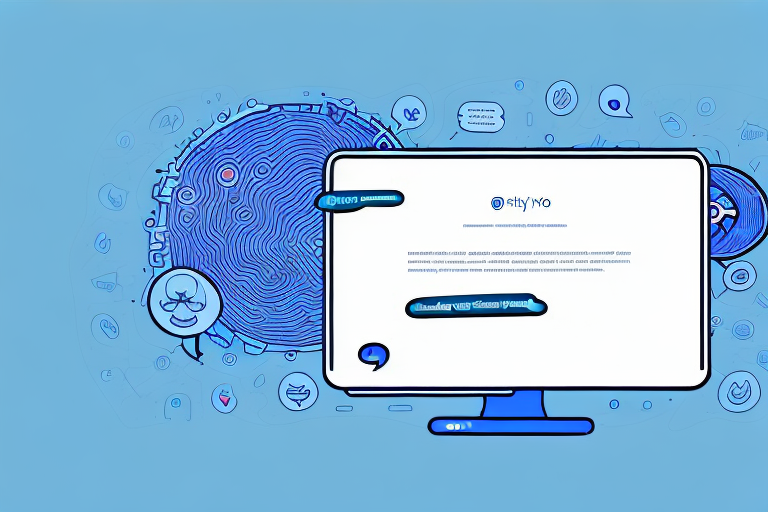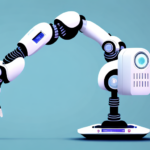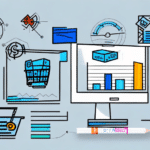Implementing Chatbot-Based Customer Support
As businesses expand and seek innovative ways to enhance customer satisfaction, chatbots have emerged as a pivotal technology in the realm of customer service. This comprehensive guide delves into the world of chatbot-based customer support, exploring their future prospects, benefits, types, platform selection, design best practices, integration strategies, maintenance, success metrics, challenges, future trends, and real-world case studies.
Why Chatbots are the Future of Customer Support
Chatbots are rapidly gaining traction among businesses of all sizes due to their ability to provide efficient, consistent, and cost-effective customer support solutions. The growing demand for 24/7 customer support has propelled companies to adopt chatbots as a means to meet customer expectations without the need for expanding human support teams.
According to a Business Insider report, the global chatbot market is expected to reach $9.4 billion by 2024, highlighting their increasing importance in customer service strategies.
Chatbots offer several advantages:
- Immediate Responses: They provide instant answers to common queries, enhancing customer satisfaction.
- Scalability: Chatbots can handle multiple inquiries simultaneously, allowing businesses to scale support operations efficiently.
- Personalization: By analyzing customer data, chatbots can offer personalized recommendations and targeted marketing, adding value to customer interactions.
As artificial intelligence and machine learning technologies advance, chatbots are set to become even more integral to customer support, offering more sophisticated and human-like interactions.
Enhancing Customer Service with Chatbots
Streamlining Routine Tasks
Chatbots excel at handling repetitive and routine tasks, such as answering FAQs, processing orders, and scheduling appointments. This automation frees up human agents to focus on more complex and nuanced customer issues, improving overall efficiency.
Consistent and Accurate Responses
Unlike human agents, chatbots provide consistent and accurate responses, minimizing the risk of errors and ensuring that customers receive reliable information every time they interact with the support system.
24/7 Availability
With chatbots, businesses can offer round-the-clock support, catering to customers in different time zones and enhancing the overall customer experience. Studies from Salesforce show that 64% of consumers expect immediate responses from customer service, making chatbots a valuable tool for meeting these expectations.
Personalized Customer Experiences
By leveraging customer data and purchase history, chatbots can deliver personalized experiences, recommending products or services that align with individual customer preferences, thereby increasing the likelihood of repeat business.
Benefits of Chatbot-Based Customer Support
Cost Efficiency
Implementing chatbots reduces operational costs by automating tasks that would otherwise require human intervention. According to a IBM study, businesses can save up to 30% on customer support costs by deploying chatbots.
Data-Driven Insights
Chatbots collect valuable data on customer interactions, behaviors, and preferences. This data enables businesses to make informed, data-driven decisions to enhance their products, services, and marketing strategies.
Scalability
Chatbots can effortlessly handle increased customer inquiries without the need for proportional increases in support staff, making it easier for businesses to scale during peak times.
Enhanced Customer Satisfaction
By providing quick and accurate responses, along with personalized interactions, chatbots significantly improve customer satisfaction and loyalty.
Types of Chatbots and Choosing the Right Platform
Types of Chatbots
- Rule-Based Chatbots: Operate based on predefined rules and responses. They are ideal for handling simple, straightforward queries.
- AI-Based Chatbots: Utilize machine learning and natural language processing to understand and respond to more complex and varied customer inquiries.
Choosing the Right Chatbot Platform
Selecting the appropriate chatbot platform is crucial for aligning with your business needs. Consider the following factors:
- Ease of Use: The platform should be user-friendly, allowing for easy setup and management.
- Integration Capabilities: Ensure the chatbot can seamlessly integrate with existing systems such as CRM, e-commerce platforms, and communication channels.
- AI Capabilities: Advanced AI features enable more natural and effective interactions with customers.
- Customization Options: The ability to tailor the chatbot’s appearance and functionality to match your brand’s identity is essential.
- Pricing Model: Evaluate the cost structure to ensure it fits within your budget while meeting your needs.
Popular chatbot platforms include IBM Watson Assistant, Google Dialogflow, and Rasa, each offering unique features tailored to different business requirements.
Designing an Effective Chatbot User Experience
Aligning with Brand Voice and Tone
Ensure that the chatbot’s language and personality reflect your brand’s voice and tone. A well-aligned chatbot reinforces brand identity and fosters a consistent customer experience.
User-Friendly Interface
The chatbot should have an intuitive interface with clear instructions and prompts, making it easy for users to navigate and interact with.
Seamless Transition to Human Support
Design the chatbot to recognize when to escalate complex issues to human agents, ensuring that customers receive the necessary support without frustration.
Personalization
Incorporate personalization by utilizing customer data to tailor interactions and recommendations, enhancing the overall user experience.
Feedback Mechanism
Include features that allow customers to provide feedback on their chatbot interactions. This feedback is invaluable for continuous improvement and ensuring the chatbot meets customer needs.
Integrating and Maintaining Your Chatbot
Integration with Existing Channels
For a seamless customer experience, integrate your chatbot with existing customer service channels such as email, social media, and live chat systems. This ensures that all customer interactions are unified and managed efficiently.
Managing and Maintaining Performance
Regularly monitor the chatbot’s performance by tracking key metrics such as response time, accuracy, and customer satisfaction. Provide updates and resolve technical issues promptly to maintain optimal functionality.
Continuous Training and Refinement
Train the chatbot using ongoing customer interactions to improve its understanding and response capabilities. This continuous learning process enhances the chatbot’s effectiveness over time.
Measuring Success and Overcoming Challenges
Key Metrics for Success
Evaluate the effectiveness of your chatbot-based customer support by tracking metrics such as:
- Response Time: Speed at which the chatbot replies to customer inquiries.
- Customer Satisfaction Scores: Feedback from customers regarding their chatbot interactions.
- Cost Savings: Reduction in costs achieved by automating support tasks.
Common Challenges and Solutions
Implementing chatbot-based customer support can present several challenges, including technical issues, ensuring chatbot performance, and encouraging customer adoption. To overcome these:
- Robust Implementation Plan: Develop a clear plan with thorough testing and training processes.
- Ongoing Support: Collaborate with your chatbot provider to address technical issues promptly.
- Customer Education: Inform and educate customers about the chatbot’s capabilities to encourage usage and adoption.
Future Trends and Case Studies
Emerging Trends in Chatbot Technology
Stay abreast of the latest advancements in chatbot technology to maintain a competitive edge:
- Voice-Enabled Chatbots: Integration of voice recognition for more natural interactions.
- Virtual Assistants: Enhanced capabilities for managing complex tasks and providing comprehensive support.
- Advanced Analytics: Improved data analysis tools for deeper insights into customer behavior.
Successful Implementation Case Studies
Various industries have successfully adopted chatbot-based customer support, yielding significant improvements. For example:
- Healthcare: Chatbots assist patients with appointment scheduling and preliminary diagnostics, reducing wait times and administrative burdens.
- Finance: Financial institutions use chatbots to handle routine inquiries, fraud detection, and transaction processing, enhancing security and efficiency.
- E-Commerce: Online retailers deploy chatbots for personalized shopping assistance, order tracking, and customer feedback, driving sales and customer loyalty.
Conclusion: Embracing Chatbot-Based Customer Support
Chatbot-based customer support offers a transformative approach to enhancing customer service by providing efficient, personalized, and scalable solutions. By selecting the right chatbot type and platform, designing an effective user experience, integrating with existing channels, and maintaining optimal performance, businesses can significantly improve customer satisfaction and operational efficiency. As chatbot technology continues to evolve, it is imperative for businesses to stay informed and leverage these advancements to maintain a competitive advantage and meet the ever-changing demands of their customers.






















